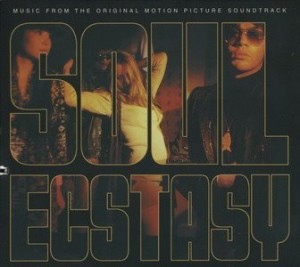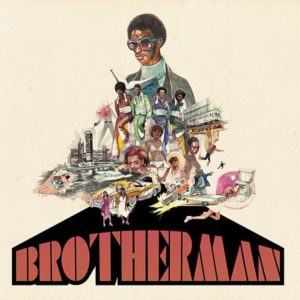The Museum Of UnCut Funk is celebrating the 50th anniversary of the March on Washington.
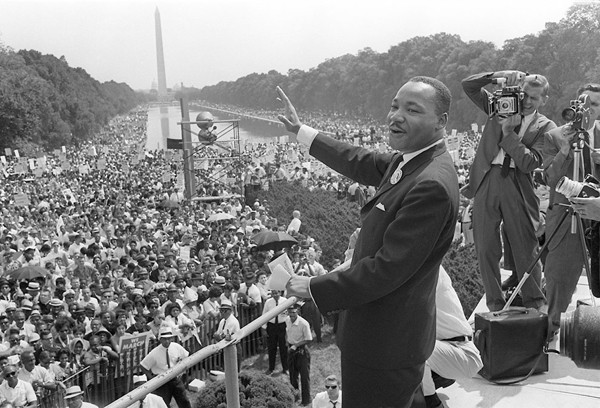
Reverend Martin Luther King, Jr. waves to supporters on the Mall in Washington, D.C. during the “March on Washington,” on August 28, 1963. King said the march was “the greatest demonstration of freedom in the history of the United States.”
Fifty years ago there was so much racial turmoil in the United States that the news for the entire year leading up to the March On Washington was centered around the actions of civil rights activists and those who opposed them. Here are some unforgettable moments during this period of the civil rights movement.

Dorothy Bell, 19, of Birmingham, Alabama, waits at a downtown Birmingham lunch counter for service that never came, April 4, 1963. She was later arrested with 20 others in sit-in attempts.
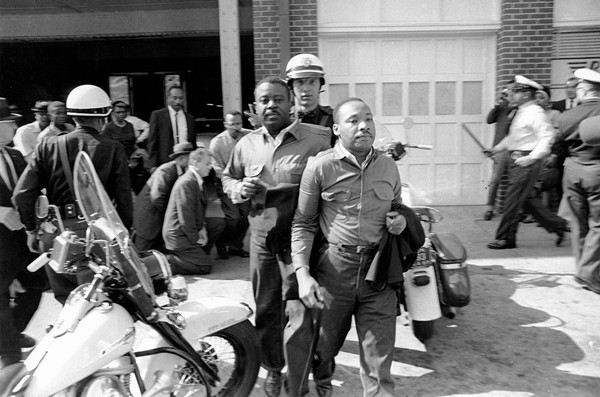
Rev. Ralph Abernathy, left, and Rev. Martin Luther King Jr., are removed by a policeman as they led a line of demonstrators into the business section of Birmingham, Alabama, on April 12, 1963.

A 17-year-old civil rights demonstrator, defying an anti-parade ordinance in Birmingham, Alabama, is attacked by a police dog on May 3, 1963.
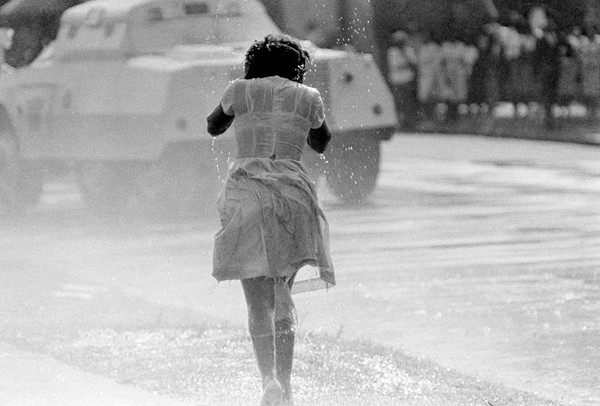
A young Black woman, soaked by a fireman’s hose as an anti-segregation march is broken up by police, in Birmingham, Alabama, on May 8, 1963.
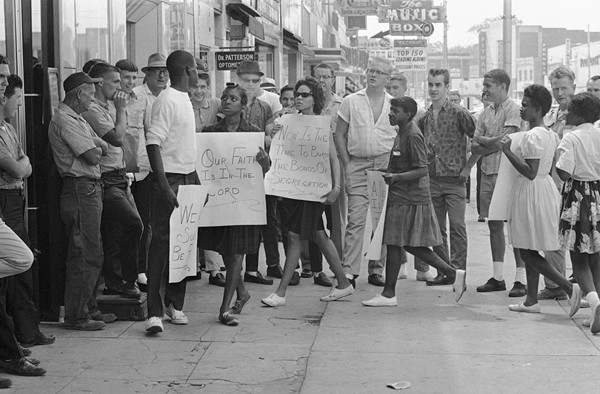
A picketer in front of a Gadsden, Alabama, drugstore turns to answer a heckler during a demonstration, on June 10, 1963. About two dozen Black youths picketed several stores and two theaters.

Attorney General Robert Kennedy uses a bullhorn to address Black demonstrators at the Justice Department, on June 14, 1963. The demonstrators marched to the White House, then to the District Building, and wound up at the Justice Department.
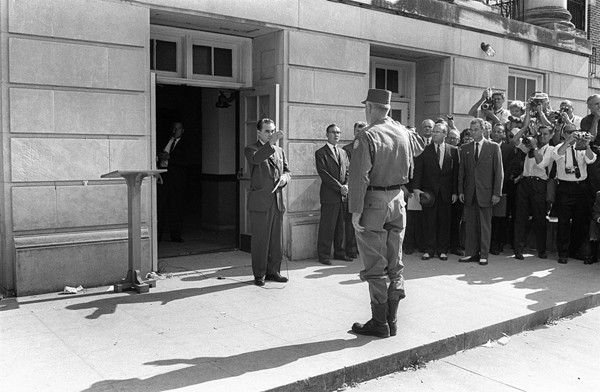
Alabama’s governor George Wallace (left) faces General Henry Graham, in Tuscaloosa, at the University of Alabama, on June 12, 1963. Wallace blocked the enrollment of two Black students, Vivian Malone and James Hood. Despite an order of the federal court, Governor George Wallace appointed himself the temporary University registrar and stood in the doorway of the administration building to prevent the students from registering.
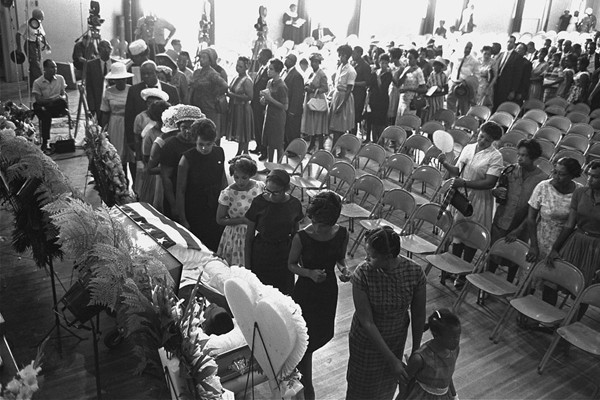
Mourners file past the open casket of slain civil rights activist Medgar Evers in Jackson, Mississippi, on June 15, 1963. On June 12, Evers was shot and killed outside his home by by Byron De La Beckwith, a member of the White Citizens’ Council.

Allison Turaj, 25, of Washington, D.C., blood running down her cheek, was cut over her right eye by a thrown rock in a mass demonstration at a privately owned, segregated amusement park in suburban Woodlawn in Baltimore, on July 7, 1963.
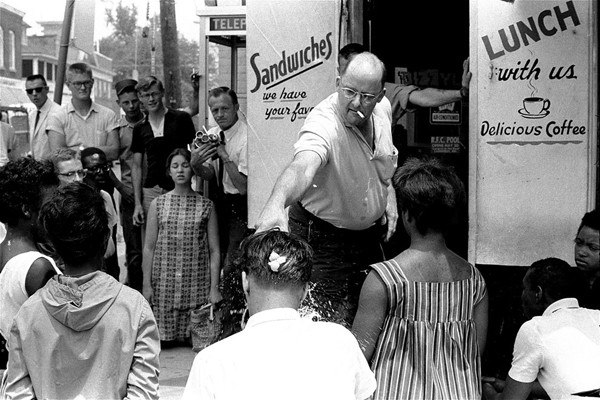
Robert Fahsenfeldt, owner of a segregated lunchroom in the racially tense Eastern Shore community of Cambridge, Maryland, douses a white integrationist with water, on July 8, 1963. The integrationist, Edward Dickerson, was among three white and eight Black protesters who knelt on the sidewalk in front of the restaurant to sing freedom songs. A raw egg, which Fahsenfeldt had broken over Dickerson’s head moments earlier, still is visible on the back of Dickerson’s head.
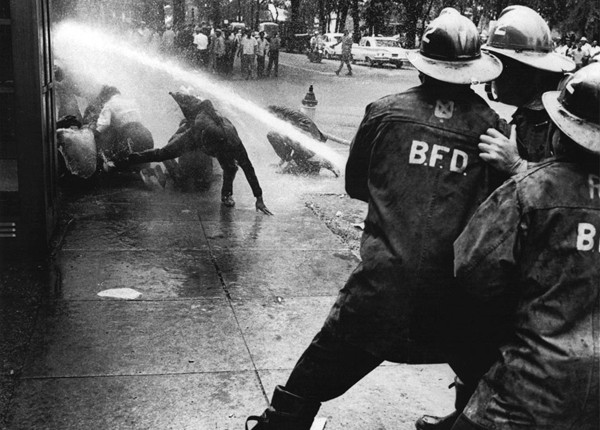
Firefighters turn their hoses full force on civil rights demonstrators in Birmingham, Alabama, on July 15, 1963.
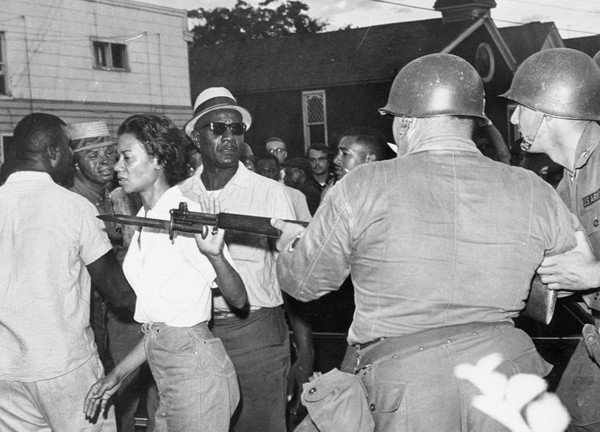
Mrs. Gloria Richardson, head of the Cambridge Nonviolent Action Committee, pushes a National Guardsman’s bayonet aside as she moves among a crowd of Black marchers to convince them to disperse, in Cambridge, Maryland, on July 21, 1963.
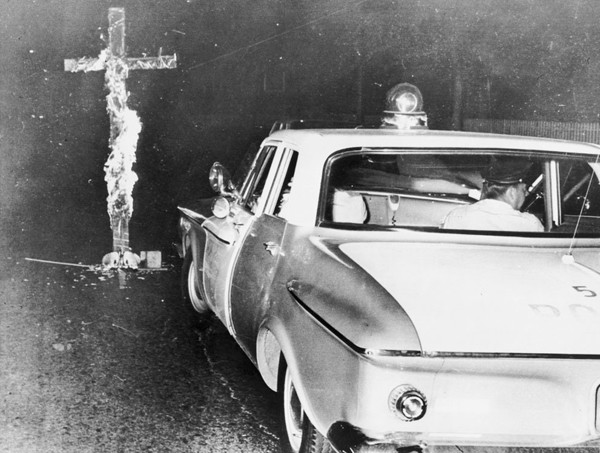
Chicago police move in to knock down a burning cross in front of a home, after an Black family moved into a previously all white neighborhood, on the 6th consecutive night of disturbances, on August 3, 1963.
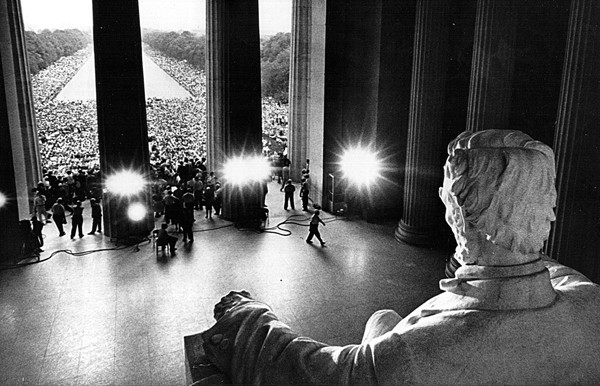
The statue of Abraham Lincoln is illuminated during a civil rights rally, on August 28, 1963 in Washington, D.C.
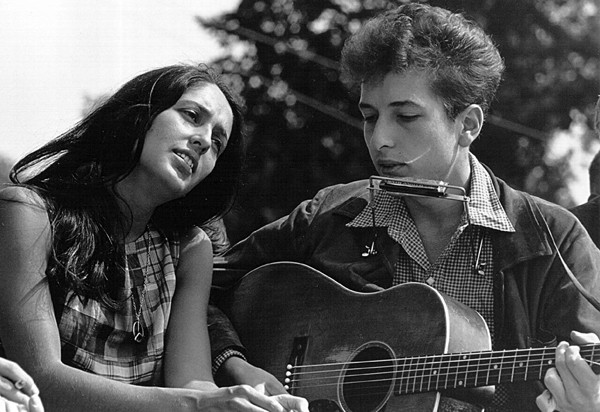
Folk singers Joan Baez and Bob Dylan perform during a civil rights rally on August 28, 1963 in Washington D.C.
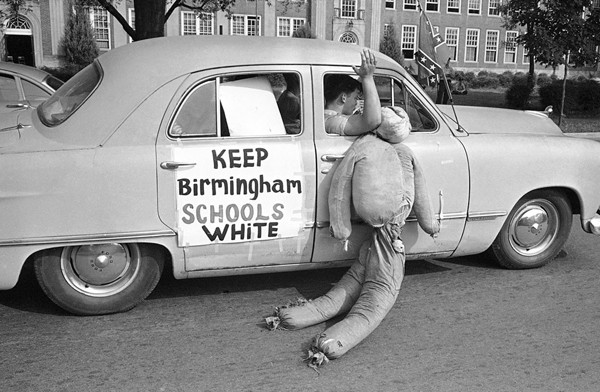
White students in Birmingham, Alabama, drag an Black effigy past West End High School, on September 12, 1963. Two Black girls attended the desegregated school and a majority of the white students were staying away from classes. Police stopped this car in a segregationist caravan in front of the school to caution them about fast driving and blowing auto horns in front of a school.



